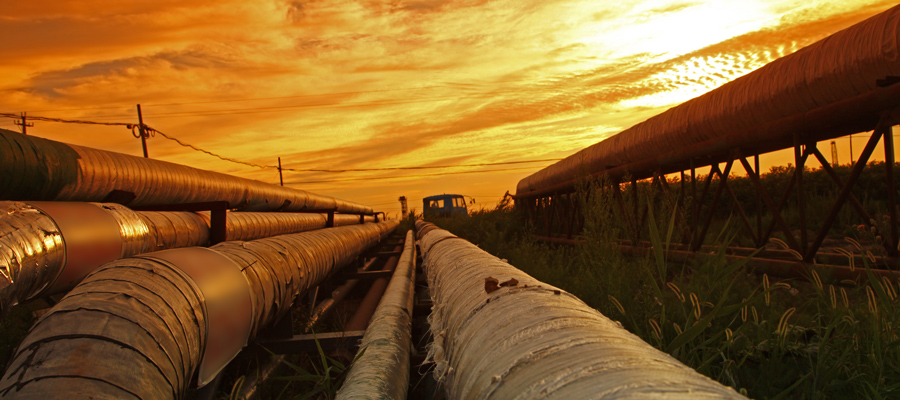Greenhouse gas emissions and the Energy East Pipeline

I submitted the following to the National Energy Board, which is seeking comments on what should be included as part of the upcoming hearings on the proposed Energy East Pipeline. In particular, they are interested in arguments about the inclusion of greenhouse gas emissions. The deadline for submissions is May 31 if you are inclined to make one of your own.
**
Re: A83400 National Energy Board – Letter to all interested parties – Comment Period on the Draft Lists of Issues and Draft Factors and Scopes of the Factors for the Environmental Assessments – Energy East and Eastern Mainline
To whom it may concern,
This letter responds to the NEB’s May 10, 2017 letter and request for input. In particular, I submit that the List of Issues for the Energy East project should include potential impacts on greenhouse gas emissions (Appendix 1 Section C.1), broadly defined to include both upstream and downstream impacts (C.1.a and C.1.b).
I am a Senior Economist with the British Columbia office of the Canadian Centre for Policy Alternatives, a national research institute. For the past decade I have done extensive research on Canada’s greenhouse gas (GHG) emissions at the national and sub-national (British Columbia) level, and related climate and energy policies.
My comments below draw primarily on my January 2017 report, Extracted Carbon: Re-examining Canada’s contribution to climate change through fossil fuel exports, co-published by the Canadian Centre for Policy Alternatives, the Parkland Institute, and the Corporate Mapping Project (a multi-year SSHRC partnership with the University of Victoria). The full report is attached as an appendix to this letter, and goes into greater detail on the conceptual framework and data analysis relevant to an understanding of the full scope of GHG emissions from the removal of fossil fuels from Canadian soil.1
Consideration of GHG emissions
In the wake of the 2015 Paris Agreement and the 2016 Pan-Canadian Framework on Clean Growth and Climate Change, it is imperative that major fossil fuel energy projects be reviewed by the NEB for their impact on GHG emissions. Signatories to the Agreement commit to “holding the increase in the global average temperature to well below 2°C above pre-industrial levels and to pursue efforts to limit the temperature increase to 1.5°C above pre-industrial levels” (Article 2) and “to reach global peaking of greenhouse gas emissions as soon as possible” (Article 4).2
Canada is at great risk of approving new fossil fuel infrastructure that will be contrary to the long-term objective of the Paris Agreement.
Second, the total mitigation effort in the Pan-Canadian Framework is itself insufficient relative to Canada’s INDC. Further effort is required to estimate the emissions impact of commitments in the Pan-Canadian Framework, but modeling cited in framework document itself notes that additional emission reductions of 44 Mt CO2 are required for Canada to meet its 2030 target. Deeper decarbonization after 2030 will be needed for Canada to meet a 2050 target of 80-90% below 2005 levels to be consistent with the Paris Agreement objectives.
Canada is thus at great risk of approving new fossil fuel infrastructure that will be contrary to the long-term objective of the Paris Agreement. This “carbon lock in” results when new production capacity ensures a certain amount of GHG emissions moving forward, making it more difficult to achieve emission-reduction targets. This concept applies particularly to very capital-intensive projects in oil and gas, which once built are less sensitive to changes in market price or carbon pricing as long as their operating costs can be covered. Alternatively, due to mitigation efforts in Canada and/or in Canada’s export markets such infrastructure would need to be come a “stranded asset” that cannot realize its intended lifespan.
Neither industry nor government appears to be seriously considering the Paris Agreement in its future planning for the oil and gas industry. The National Energy Board (NEB), for example, continues to anticipate increased Canadian fossil fuel production and exports in its October 2016 reference forecast. The federal government appears to want to have it both ways: supporting fossil fuel production growth and climate action.
Upstream and downstream impacts
For the Energy East pipeline, the GHG impact will transcend the direct emissions associated with pipeline construction and operations, which will be relatively small. This piece of fossil fuel infrastructure has significant GHG implications from facilitating increased Canadian oil production upstream and combustion emissions downstream (the latter counted in the importing country’s GHG inventory).
I use the term “extracted carbon” to refer to the total amount of fossil fuels extracted from Canadian soil, and which end up in the atmosphere (irrespective of the country where they are combusted). This measure includes emissions from fossil fuel combustion in Canada (consistent with the prevailing UNFCCC practice) but adds the carbon content of exported fossil fuels net of the carbon in imported fossil fuels.
While Canada’s GHG emissions as conventionally measured have been relatively flat since 2000, Canada’s extracted carbon in 2014 was 26% higher than 2000. All of the growth in extracted carbon is due to growth of net exports, and most of this is the result of a 423% rise in net exports of crude oil since 2000. This highlights the importance of downstream emissions.
While Canada’s GHG emissions have been relatively flat since 2000, Canada’s extracted carbon in 2014 was 26% higher than 2000.
For Canada I consider a budget for extracted carbon based on the country’s share of global proven reserves. Since extracted carbon each year represents a decline in those proven reserves, this estimation is important to understanding how much carbon can realistically be extracted in Canada, whether for domestic purposes or for export.
The simple conclusion is that Canada’s proven reserves are much larger than its plausible carbon budget, and proven-plus-probable reserves larger still. At 2014 levels of extracted carbon, Canada’s carbon budget would be exhausted in just over 11 years for a budget representing a 50% chance of staying below 1.5°C, and in less than 24 years for a budget representing a 66% chance of staying below 2°C. Approving infrastructure with an intended lifespan much longer than what is implied by these carbon budgets would be inconsistent with Canada’s commitments under the Paris Agreement.
Finally, I consider in my report the potential GHG emissions impact for new LNG terminals and bitumen pipelines. For Energy East in particular, assuming 90% capacity utilization for the 1.1 million barrels per day pipeline yields 109 Mt CO2 of exported emissions per year, and adding the upstream emissions associated with getting oil sands to market, extracted carbon of 156 Mt CO2 per year. Over a 30-year timeframe, this would add 4.7 Gt CO2 to the atmosphere, an amount that itself would account for 17% of Canada’s remaining carbon budget.
Note that these numbers assume that the pipeline is supporting increased production from the oil sands, as per NEB reference forecast, and are thus incremental emissions. The GHG impact would ultimately be a function of oil prices, which affect total oil sands production levels, as well as the capacity implications of other new pipelines recently approved. GHG emissions would also be incremental emissions on a global basis in the absence of offsetting emission reductions in other countries.
In closing, these issues merit discussion and review as part of the Energy East approval process, and I hope this letter has made it clear why such an investigation needs to be part of the hearings. Given my expertise in this area, I would be pleased to provide additional evidence to the NEB and the Energy East hearings.
Notes
- Report is available online at http://www.policyalternatives.ca/publications/reports/extracted-carbon/
- United Nations Framework Convention on Climate Change, Paris Agreement, December 2015, https://unfccc.int/resource/docs/2015/cop21/eng/l09.pdf
- UNEP (2016), The Emissions Gap Report 2016, November, http://www.unep.org/emissionsgap/
- Intergovernmental Panel on Climate Change, Synthesis Report 2014, September 2014, Table 2.2, p 64, http://www.ipcc.ch/report/ar5/syr/
—
This post was produced as part of the Corporate Mapping Project (CMP). The CMP is a six-year research and public engagement initiative jointly led by the University of Victoria, the Canadian Centre for Policy Alternatives’ BC and Saskatchewan Offices, and the Alberta-based Parkland Institute. The CMP is supported by the Social Science and Humanities Research Council of Canada (SSHRC).
Topics: Climate change & energy policy, Environment, resources & sustainability

